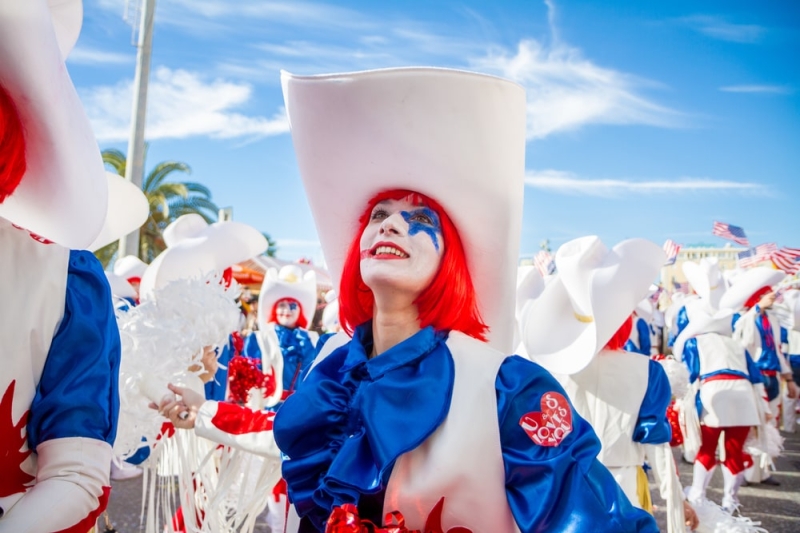
In February, the carnival season begins in Europe: with costumes, dancing, parades and unbridled fun. Winter carnivals appeared in Europe in the Middle Ages as a final feast before the start of Lent, the longest and strictest of the year. And these days, carnival is an opportunity to turn into someone else for a couple of days, hiding behind a mask or carnival costume, and have fun from the heart.
1. Carnival in Binche, Belgium (February 11 – 13)
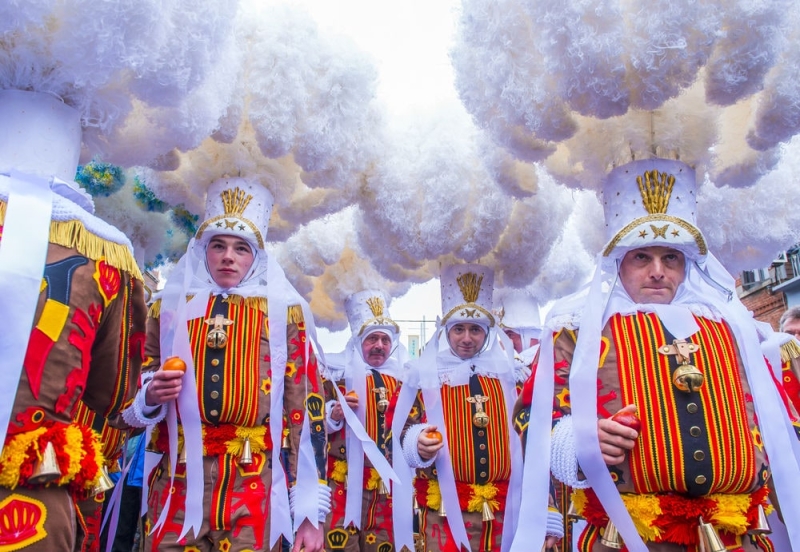
Photo: Kobby Dagan/Shutterstock.com
This is one of the oldest carnivals in Europe – it was first held in 1394. It lasts 3 days, during which almost all the men of the city dress up as Gilles, the main character of the carnival. It is believed that Gilles wore a hat with feathers and bells, a red and black embroidered suit and wooden shoes. The carnival begins on Sunday, when men in costumes take to the streets of the city and dance and sing to the accompaniment of barrel organs and drums. The second day is a youth festival, when youth organizations, in costumes and masks, march through the streets with a musical parade. On the last day, both locals and tourists gather in the main square, have breakfast with oysters and champagne, dance, eat sweets, throw oranges at each other and have fun.
2. Carnival in Madeira, Portugal (February 7 – 14)
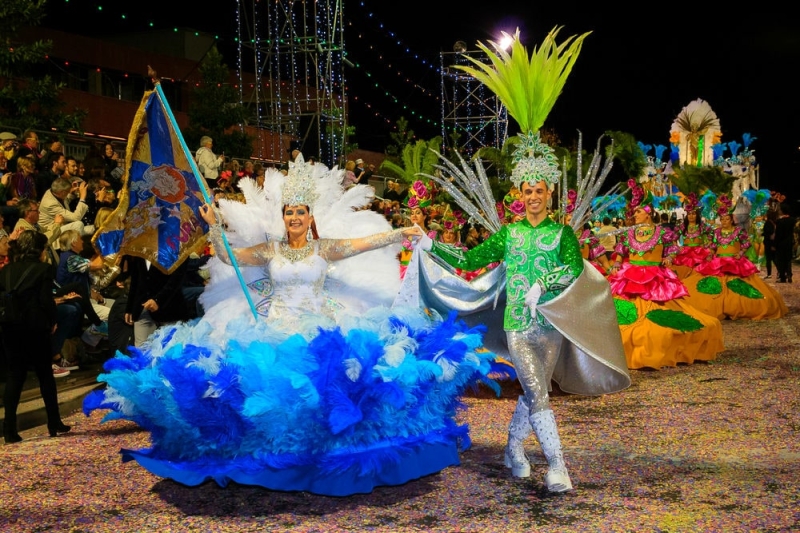
Photo: Cicero Castro/Shutterstock.com
Winter Carnival is Madeira’s biggest holiday. It begins on Friday with musicians taking to the streets and waking up residents with cheerful melodies. Then, on Municipal Square, musicians give concerts that do not stop day or night. The real fun begins on February 11, Sunday evening, when a carnival procession takes place through the streets. It stops at Municipal Square, where the fun continues until the morning. And on Tuesday there is a parody of the Sunday parade – comedians and actors put on ridiculous costumes and parody the parade participants, making the audience laugh and making faces. The holiday ends with fireworks.
3. Carnival in Viareggio, Italy (January 27 – February 17)
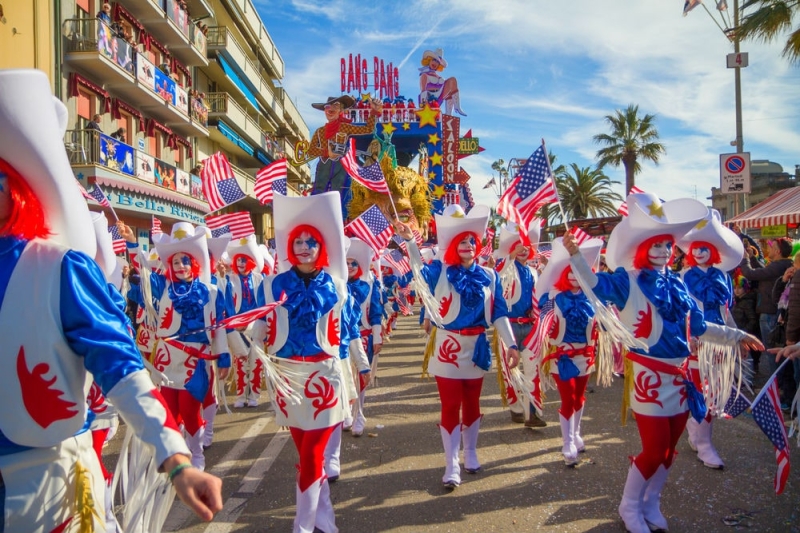
Photo: Onigiri studio/Shutterstock.com
Viareggio is a resort in Tuscany, on the shores of the Ligurian Sea, where a grandiose carnival has been held since 1873. Every year a new carnival theme is chosen, most often satirical or political. In keeping with this theme, city residents build huge, colorful papier-mâché dolls, which are then carried around the city on platforms. The height of the dolls is from 10 to 20 meters, each platform is pulled around the city by 30 people. Most of the dolls make fun of world politicians – they are depicted naked, in an indecent costume, in a cage or in a frying pan. During parades, music blares, candies and confetti are scattered everywhere, and in the evening concerts are played in city squares. Doll parades are held four times (February 4, 11, 13 and 17).
4. Bohemian Carnival in Prague, Czech Republic (February 20 – March 4)
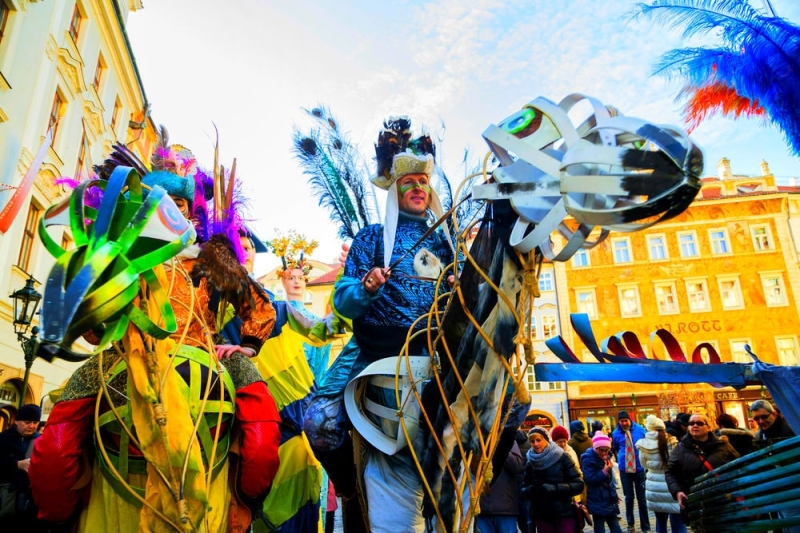
Photo: Nadezda Murmakova/Shutterstock.com
The Prague Carnival lasts ten days, during which balls and masquerades, carnival processions and theatrical shows are held. Exhibitions and concerts are held in palaces, theaters and galleries. The opening of the carnival takes place in the former royal residence of Clam-Gallas. This is followed by concerts on Old Town Square, masquerades for adults and children, gondola rides on the Vltava and fashion shows. The peculiarity of the Bohemian Carnival is that anyone who has a fancy dress costume and mask can take part in masquerade processions and parades. During the carnival, there are hundreds of stalls on the streets selling sausages, dumplings and stewed cabbage, accompanied by beer, mulled wine and Becherovka.
5. Venice Carnival, Italy (January 27 – February 13)
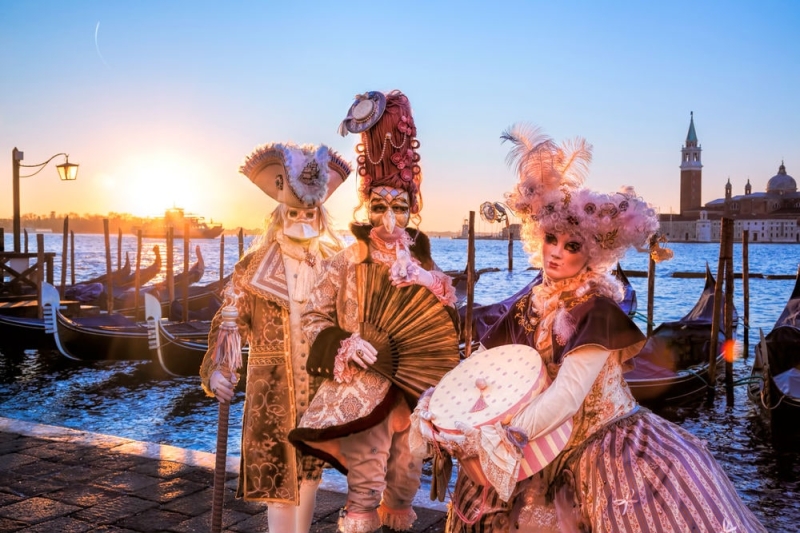
Photo: Samot/Shutterstock.com
As throughout the world, the Venice Carnival takes place in the days leading up to Lent. For Venice and all the romantics of the world, this is a huge holiday that lasts for two weeks. While many events – especially lavish masquerade balls – require an invitation and have fairly high ticket prices, there are places that you can attend for free and have just as much fun.
On the first and second days of the carnival, a boat parade takes place in the Rio di Cannaregio area. Festively decorated gondolas float along the canal in the dark of night, and dancers, acrobats and artists floating in them present a magnificent show to the public, all accompanied by bright illuminations.
In Piazza San Marco on the stage of the “Gran Teatro” there will be a competition for the best costume and mask of the carnival. Anyone can participate, the main thing is to apply in advance on the organizers’ website. To increase your chances of winning, prepare costumes for the carnival theme, which this year will be called “Creativity: City of Sports.”
6. Cologne Carnival, Germany (February 8 – 14)
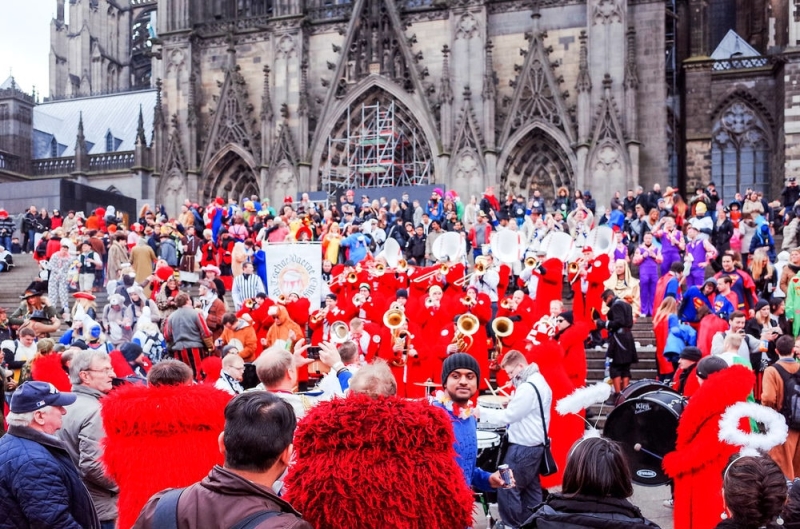
Photo: ilolab/Shutterstock.com
Cologne Carnival is the largest and most fun in Germany. Each day of the holiday has its own theme: Ladies’ Thursday, when at 11:11 am women receive the keys to the town hall from the hands of the mayor, after which men are obliged to obey the ladies all day, Procession of the Spirits on Saturday, a children’s carnival on Sunday, and on Pink Monday papier-mâché figures of politicians from all over the world are being carried through the streets and candies are being handed out.
7. Carnival in Santa Cruz de Tenerife, Spain (February 7 – 18)
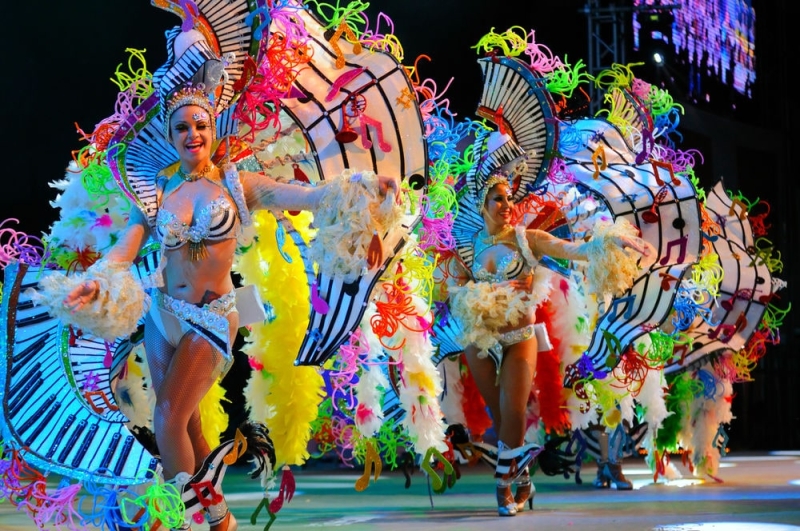
Photo: CANARYLUC/Shutterstock.com
The only bigger carnival in Santa Cruz is the carnival in Rio de Janeiro. About a million people come to Tenerife during the carnival. At the beginning there is a show of the election of the queen, then costume processions, concerts, competitions and a children’s carnival begin. The end of the carnival is symbolized by the funeral of the sardine. A giant cardboard sardine is carried around the city, accompanied by a funeral procession, and then burned in the main square.
8. Carnival in Rio de Janeiro, Brazil (February 9 – 14)
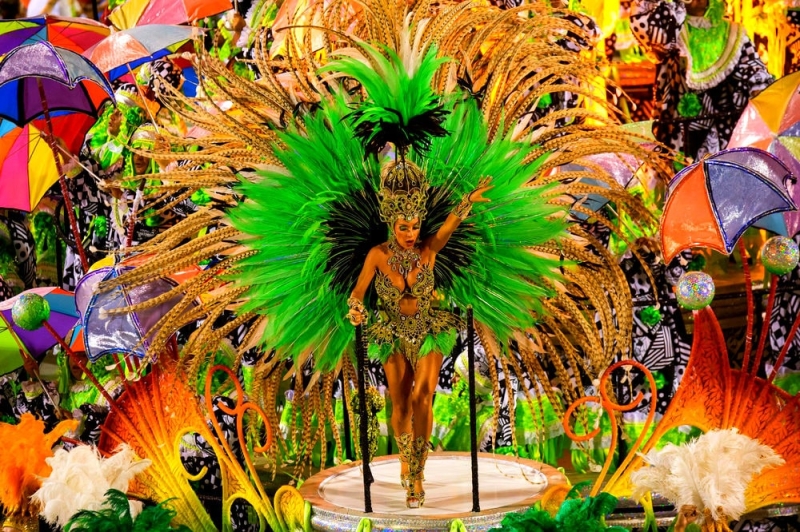
Photo: CP DC Press/Shutterstock.com
Carnival in Rio begins a week before Ash Wednesday, the day of the beginning of Lent. The celebration lasts 4 days and 4 nights, and the Brazilians themselves wait for it like most Russians wait for the New Year.
The first carnival in Brazil, which was not yet so large-scale at that time, was held in 1840 and the format was more like a masquerade ball. The tradition of holding carnivals was brought by the Portuguese from the Old World; later, samba motifs and rhythmic melodies of the inhabitants of African countries were added to their national music and dances; masks and luxurious clothes were brought by immigrants from Italy, and all kinds of decorations made of feathers and plants were brought by Indians.
Several centuries later, samba became the national music of Brazil, and the carnival in Rio, according to the Guinness Book of Records, is the largest in the world. Every year it is visited by about a million tourists, and the number of people taking part in the holiday is 3 times more. The most spectacular and largest is the Samba Parade, when 12 of the largest and most influential samba schools compete with each other for the title of the best, to the delight of all those present. Each school’s performance involves thousands of dancers performing one common dance.
9. Carnival in Nice, France (February 17 – March 3)
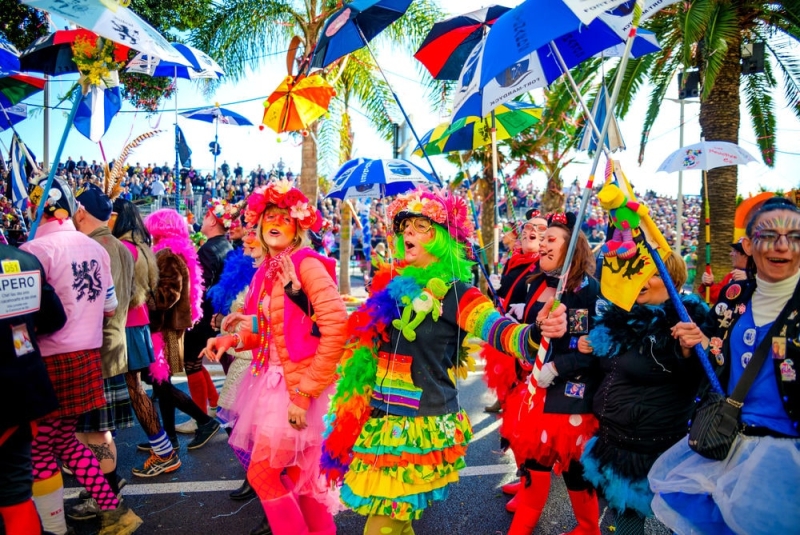
Photo: Alexander Demyanenko/Shutterstock.com
This carnival, one of the oldest in the world, was first held in the 13th century. It lasts two weeks, the main celebrations are the Flat Parade and the Flower Parade. Each year the float parade has a new theme, with dozens of floats decorated with huge papier-mâché dolls. During the Flower Parade, all the floats are decorated with thousands of flowers, and spectators and participants engage in battles, showering each other with tons of petals.
10. Musical Carnival in New Orleans, USA (early January – February 13)
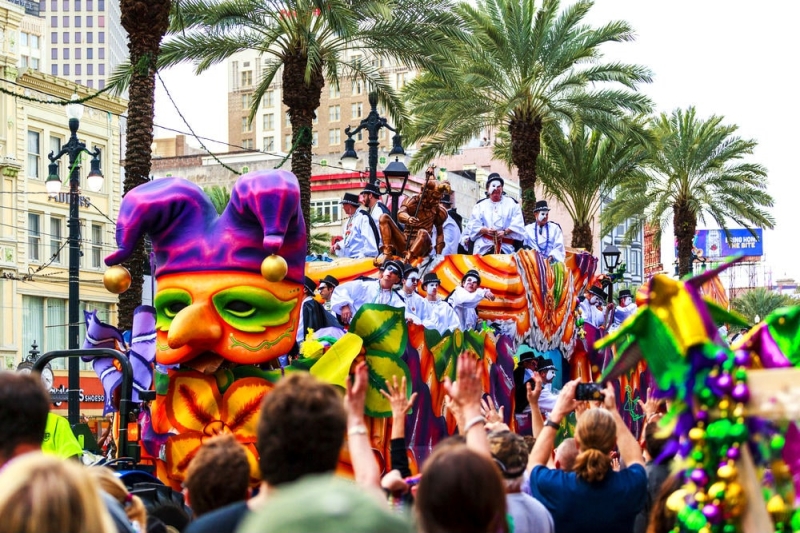
Photo: GTS Productions/Shutterstock.com
The first carnival took place in New Orleans in 1699 on Mardi Gras (Fat Tuesday, which marks the end of the week before Lent, during which it is supposed to eat meat and have fun). Now the New Orleans Carnival is also a music festival. Multi-colored floats ride through the streets, there are parades and processions of people in fancy dress, elections for the king and queen of the festival take place, and jazz groups from all over the world play on stages in different parts of the city. The most interesting parades of the festival are the Bacchus Parade, when everyone drinks, dances and sings, and the Indian Parade, during which a procession of people in exquisite dresses and masks of yellow, blue and purple goes through the city. The largest parades and concerts take place during the last week of the carnival, a few days before Mardi Gras. The epicenter of fun is the Latin Quarter.
11. Carnival in Lucerne, Switzerland (February 8 – 13)
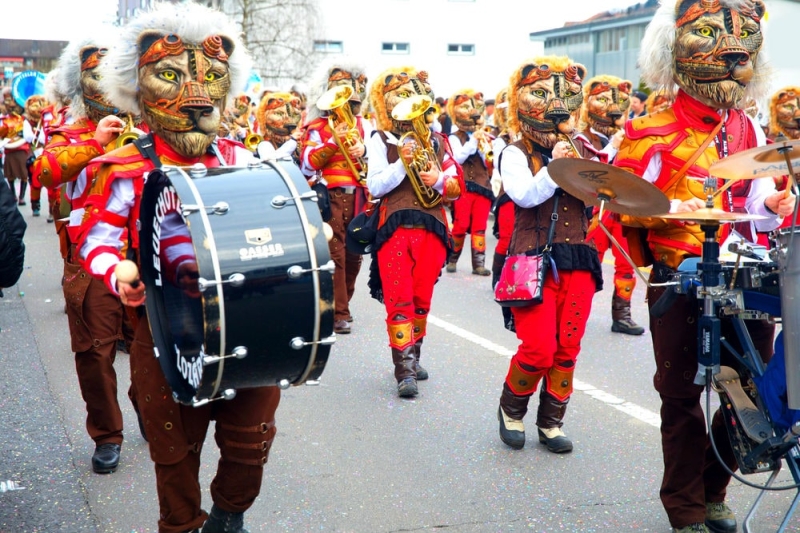
Photo: gevision/Shutterstock.com
The carnival in Lucerne has been taking place since the 15th century, it begins 6 days before the start of Lent, on Fat Thursday (as the last Thursday before Lent is popularly called). The start signal is a cannon shot, after which concerts and processions, performances by acrobats and dancers begin. On Monday, the main costume parade takes place, in which most of the city’s residents and 40 Guggenmusik (carnival musical groups) participate. The carnival ends on Tuesday with the Monster Parade with torches, candles and music.
12. Dunkirk Carnival, France (February 11 – 13)
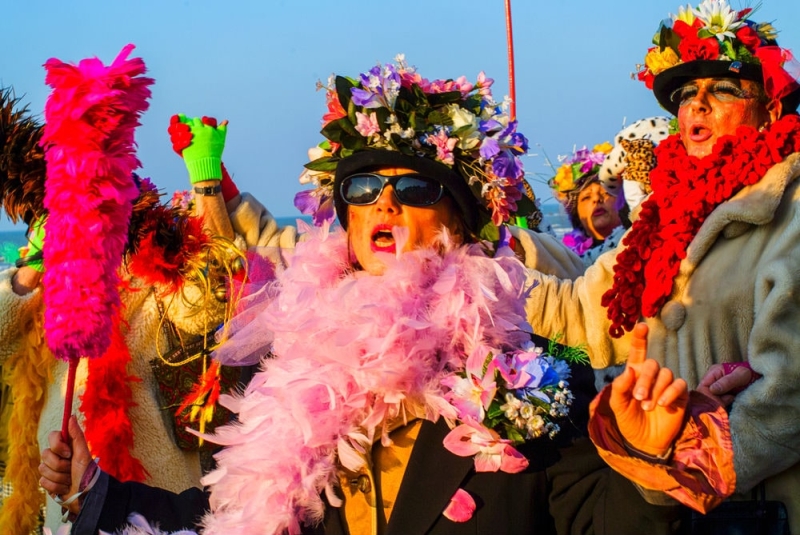
Photo: Hector Christiaen/Shutterstock.com
Dunkirk Carnival begins two days before Mardi Gras. All those celebrating wear clothes of cheerful colors. Everyone tries to come up with the most original costume possible. Men dress up as women and put on wigs and hats, women as men, many paint their faces bright colors and walk around with open multi-colored umbrellas, musicians play in the streets and squares.
13. Winter Carnival in Quebec, Canada (January 26 – February 11)

Photo: Maridav/Shutterstock.com
The Quebec carnival appeared in 1894. Today, its participants are offered a variety of entertainment: from a mummers’ parade to dog sled racing. The carnival begins with the mayor of the city presenting the symbolic keys of Quebec to the snowman Bonhomme, the symbol of the carnival. Two weeks of fun follow. One of the most popular spectacles is the rowing race on the St. Lawrence River, during which rowers maneuver between ice floes and overcome the current. On every corner there are stalls selling Caribou, a drink made from wine, liqueur and maple juice, and the sound of the trumpet trumpet, the second symbol of the carnival, can be heard everywhere. Every day musicians perform at the Ice Palace, and every night a parade of mummers passes through the streets. In the last days before Mardi Gras, the queen of the carnival and the winner of the ice sculpture competition are chosen, in which teams from 30 countries come to participate.
Preview photo: Onigiri studio/Shutterstock.com
To rent a hotel, use the travel planning service OneTwoTrip.

